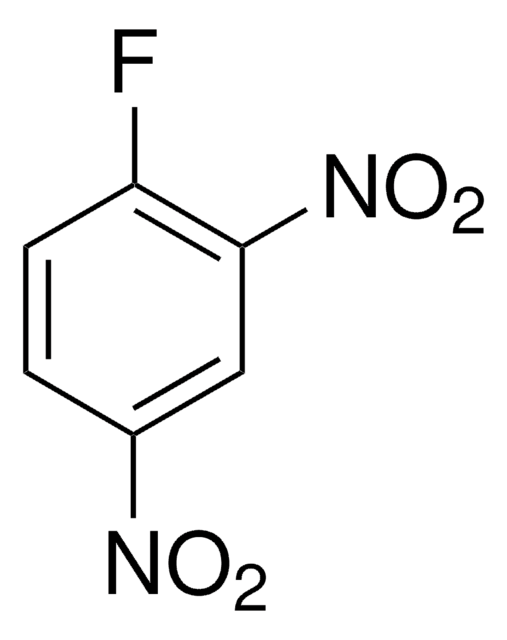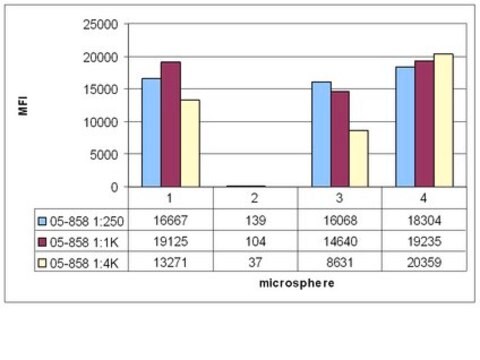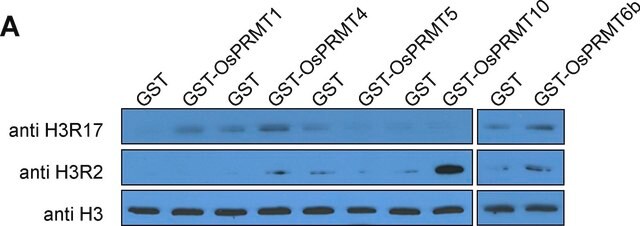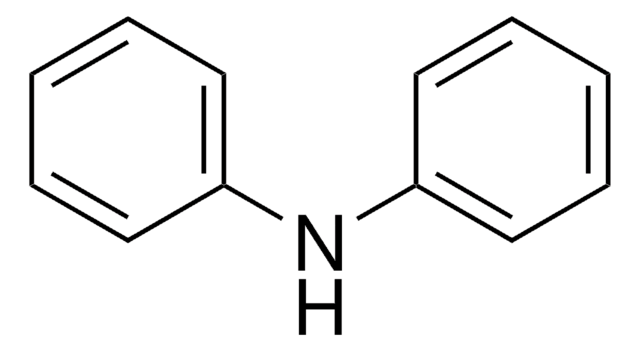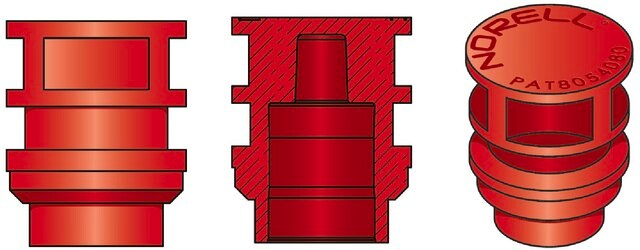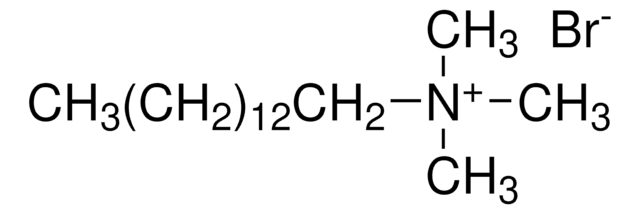04-808
Anti-dimethyl-Histone H3 (Arg2), clone 20.2 Antibody, rabbit monoclonal
culture supernatant, clone 20.2, Upstate®
Sinónimos:
H3R2me2, Histone H3 (di methyl R2)
About This Item
Productos recomendados
origen biológico
rabbit
Nivel de calidad
forma del anticuerpo
culture supernatant
tipo de anticuerpo
primary antibodies
clon
20.2, monoclonal
reactividad de especies
human, vertebrates
fabricante / nombre comercial
Upstate®
técnicas
dot blot: suitable
inhibition assay: suitable (peptide)
multiplexing: suitable
western blot: suitable
isotipo
IgG
Nº de acceso NCBI
Nº de acceso UniProt
Condiciones de envío
dry ice
modificación del objetivo postraduccional
dimethylation (Arg2)
Información sobre el gen
human ... H3C1(8350)
Descripción general
Especificidad
Inmunógeno
Aplicación
Peptide Inhibition Analysis:
2 μM of histone H3 peptide containing dimethyl-Arg2 abolished detection of histone H3 by a previous lot of anti-dimethyl-Histone H3(Arg2) (1:4,000 dilution) in immunoblots of HeLa acid extracts. Some competition of signal was also seen with unmodified peptide containing Arg2.
Peptide Dot Blot Analysis:
A 1:4,000-1:16,000 dilution of a previous lot only detected histone H3 peptide containing dimethyl-Arg2. Peptides containing unmodi-fied Arg2, dimethyl-Arg17 or dimethyl-Arg26 were not detected.
Beadlyte Histone Peptide Assay:
1:500-1:48,000 dilutions of a previous lot detected histone H3 peptide containing dimethyl-Arg2. Cross-reactivity to peptides containing unmodified Arg2 or dimethylArg 17 or 26 was not seen.
Epigenetics & Nuclear Function
Histones
Calidad
Immunoblot Analysis: A 1:500 (lane 1) and 1:1000 (lane 2) dilution of this lot detected methylated Histone H3 in acid-extracted proteins from HeLa cells.
Descripción de destino
Ligadura / enlace
Forma física
Almacenamiento y estabilidad
Handling Recommendations: Upon receipt, and prior to removing the cap, centrifuge the vial and gently mix the solution. Aliquot into microcentrifuge tubes and store at -20°C. Avoid repeated freeze/thaw cycles, which may damage IgG and affect product performance.
Nota de análisis
HeLa cell acid extracts
Información legal
Cláusula de descargo de responsabilidad
¿No encuentra el producto adecuado?
Pruebe nuestro Herramienta de selección de productos.
Código de clase de almacenamiento
12 - Non Combustible Liquids
Clase de riesgo para el agua (WGK)
WGK 1
Punto de inflamabilidad (°F)
Not applicable
Punto de inflamabilidad (°C)
Not applicable
Certificados de análisis (COA)
Busque Certificados de análisis (COA) introduciendo el número de lote del producto. Los números de lote se encuentran en la etiqueta del producto después de las palabras «Lot» o «Batch»
¿Ya tiene este producto?
Encuentre la documentación para los productos que ha comprado recientemente en la Biblioteca de documentos.
Nuestro equipo de científicos tiene experiencia en todas las áreas de investigación: Ciencias de la vida, Ciencia de los materiales, Síntesis química, Cromatografía, Analítica y muchas otras.
Póngase en contacto con el Servicio técnico